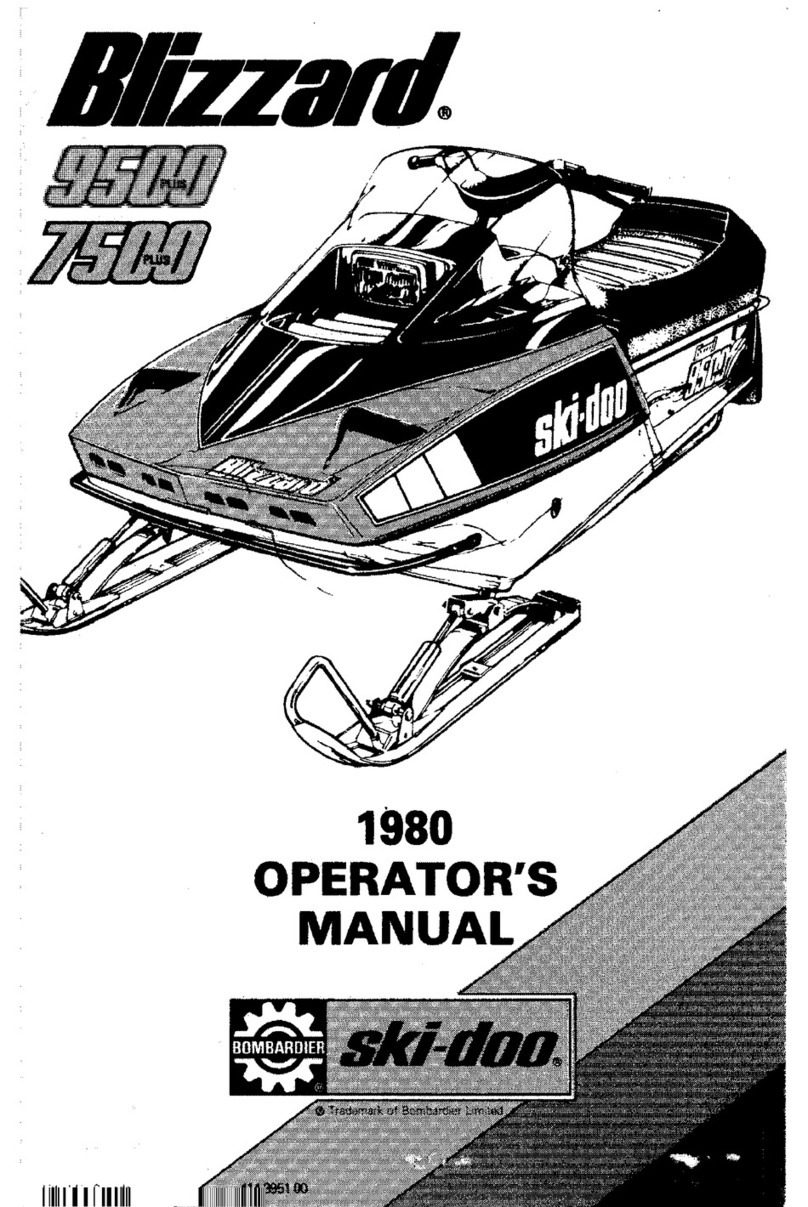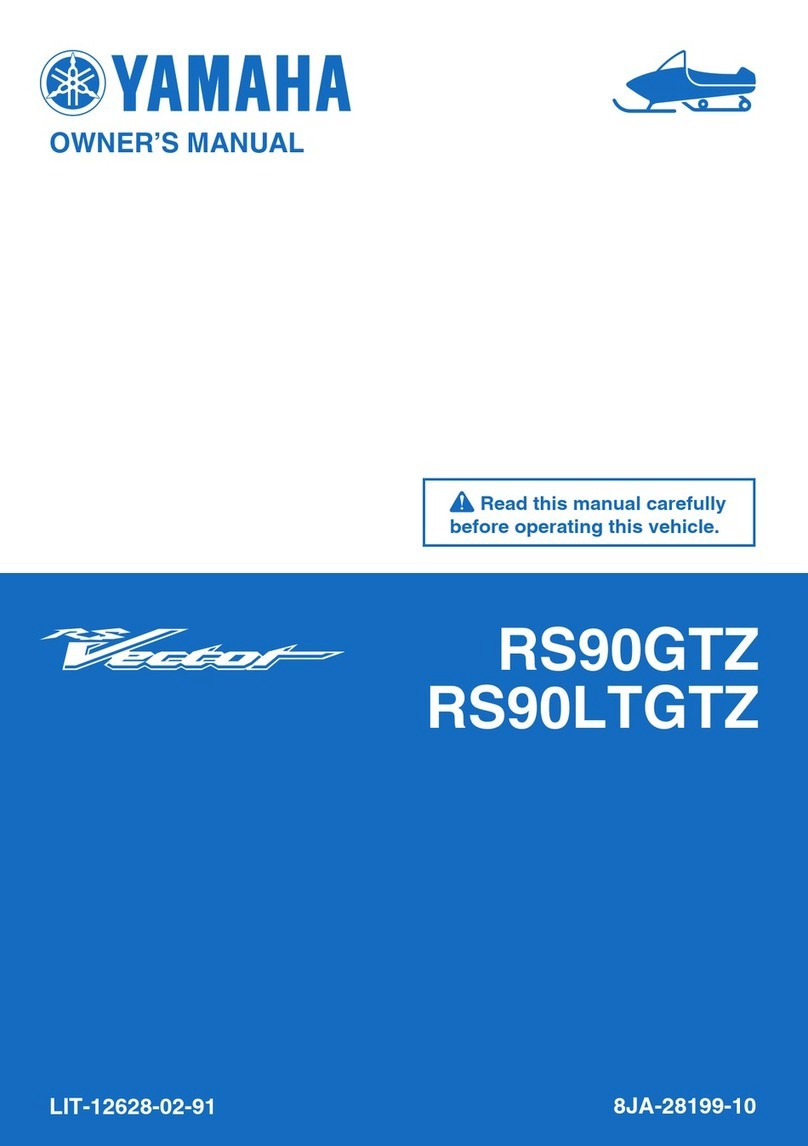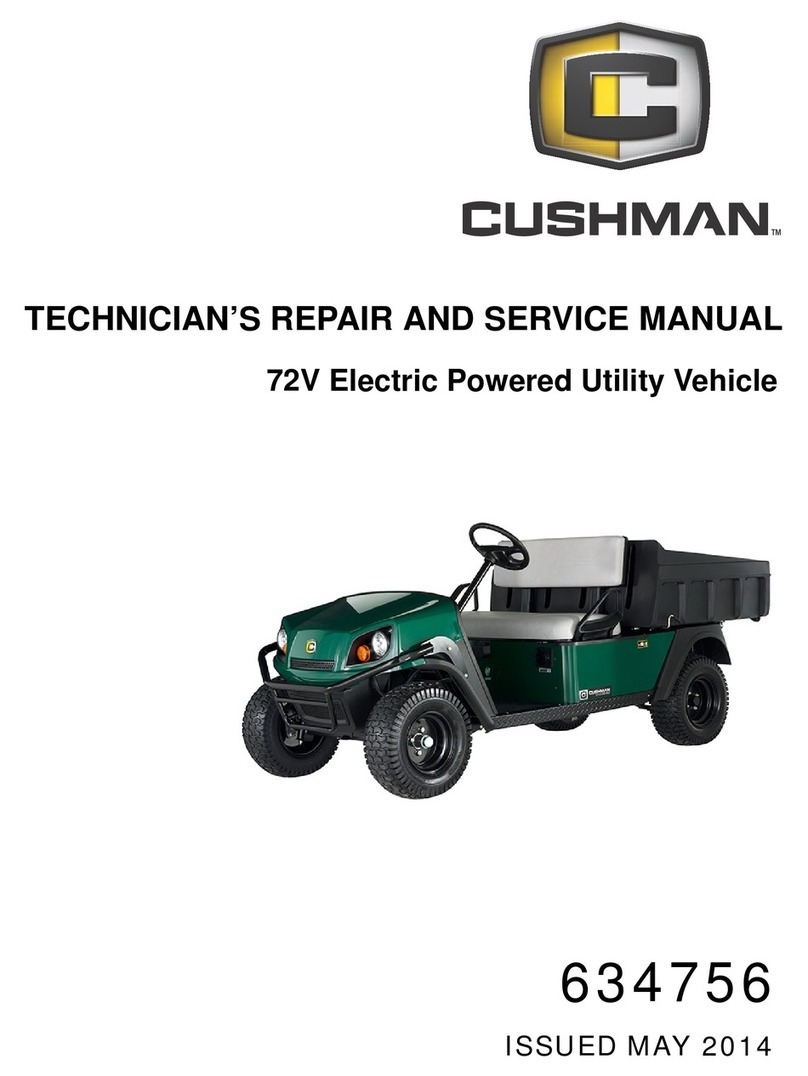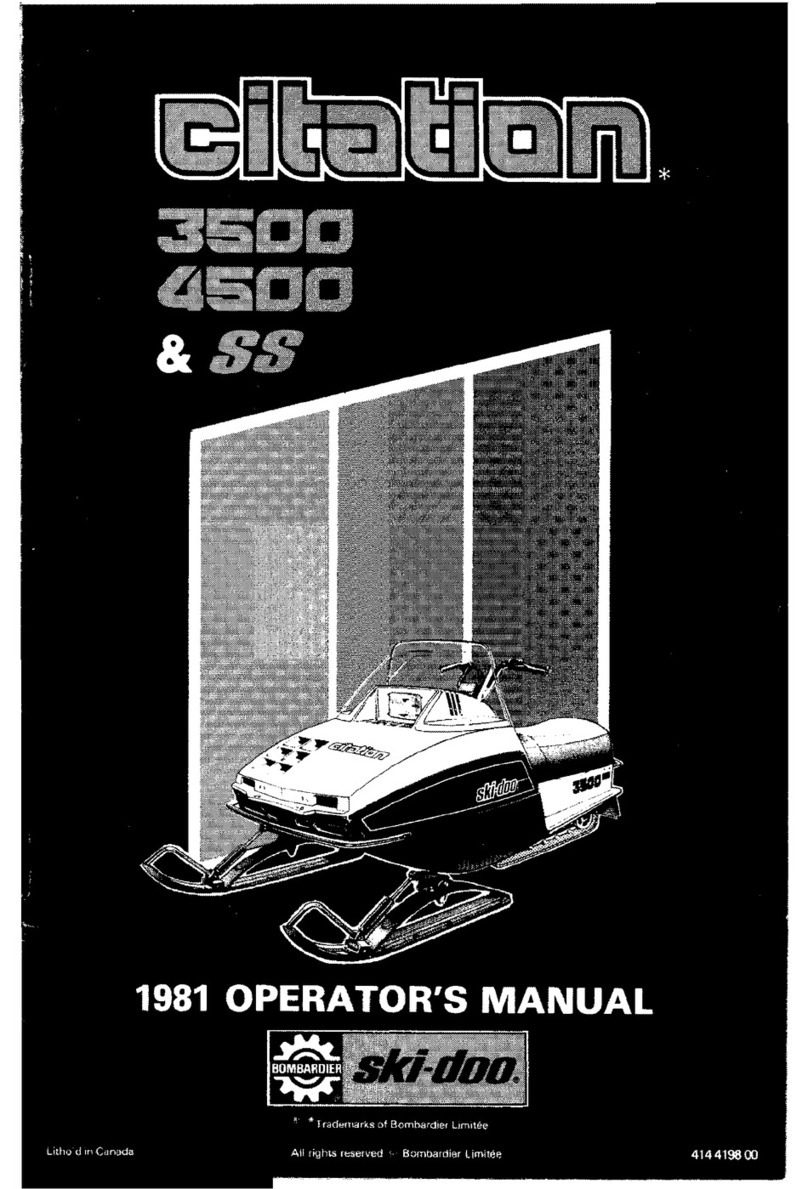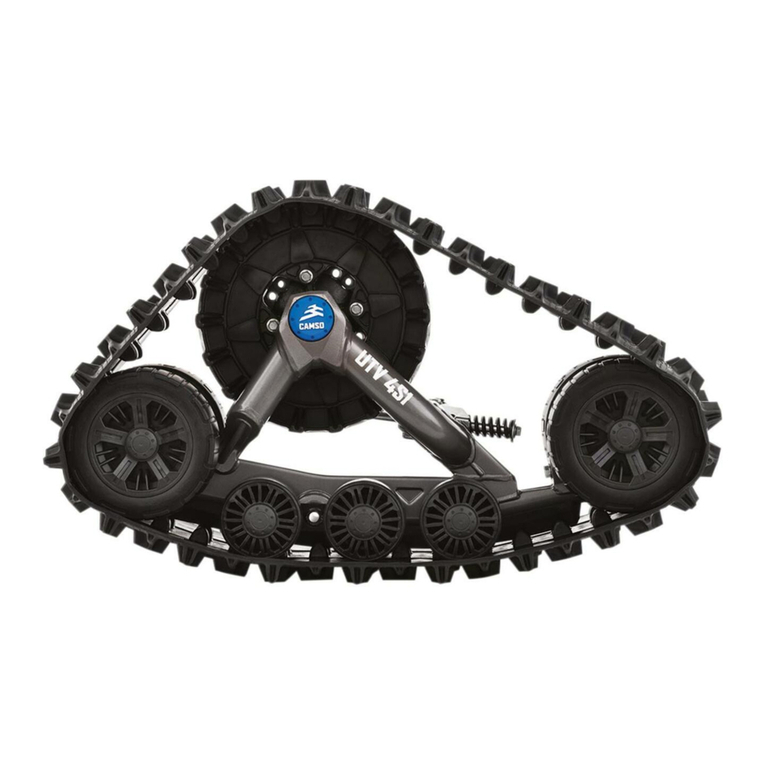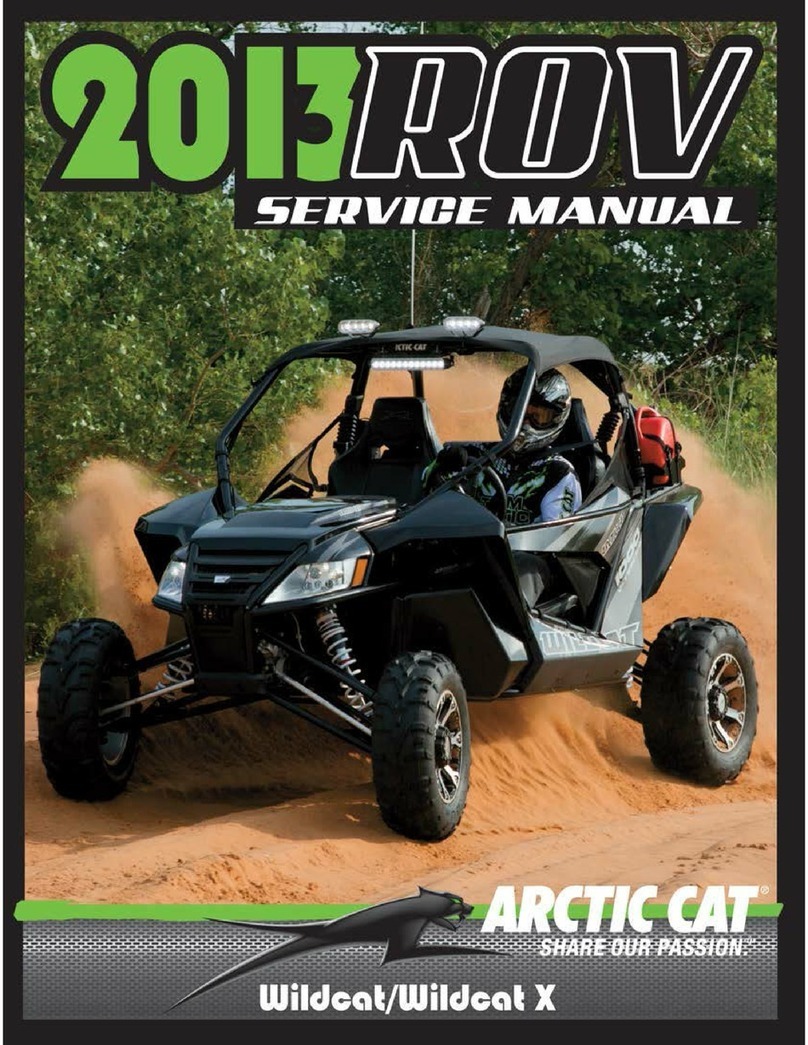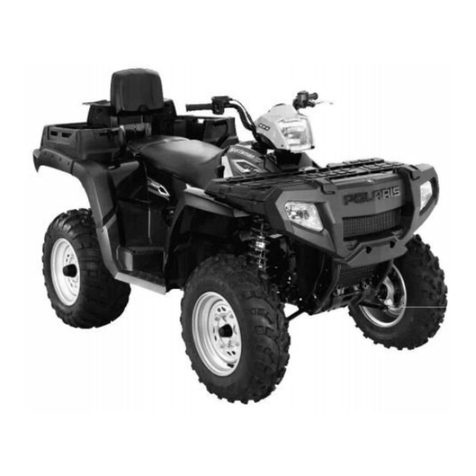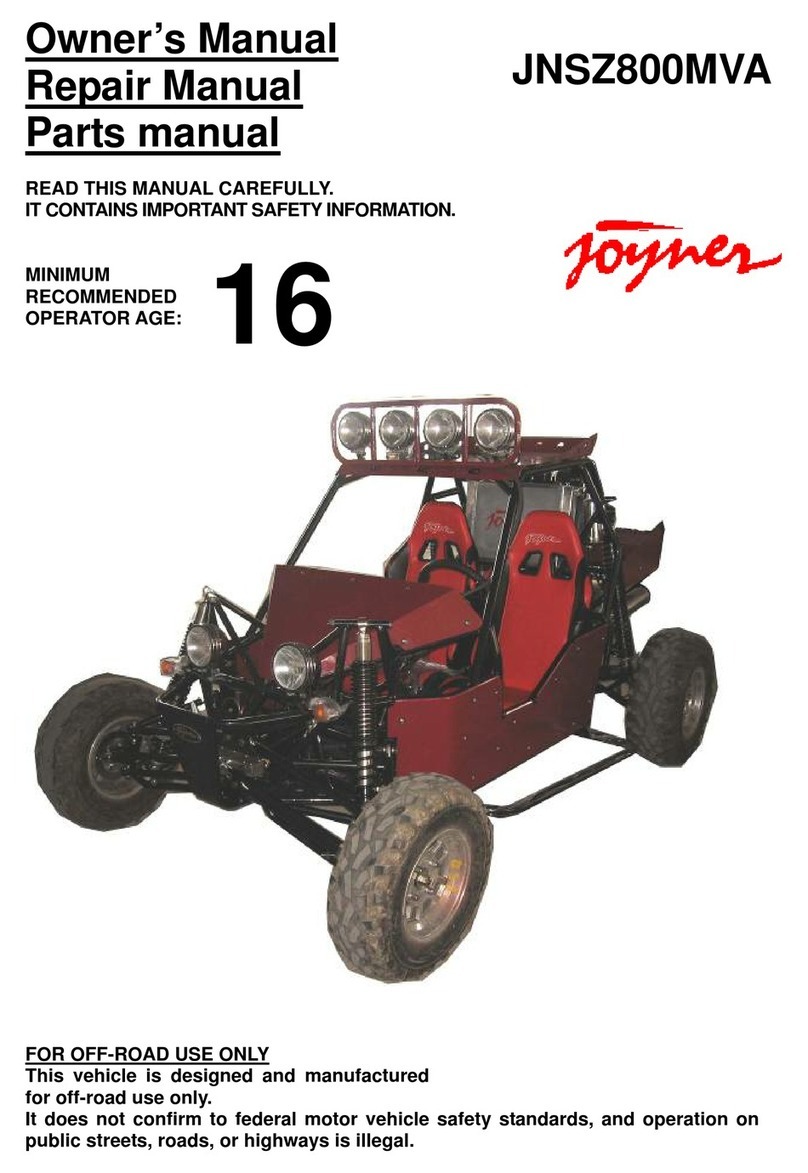Totem LYNX Guide

User Manual and maintenance instructions
lynX
The three-wheeler electric
Kickscooter with an Italian heart
TO. TEM is the Italian startup that has changed the world of micro-
mobility, thanks to a sustainable approach and the attention to users
and their safety
www.totemev.com/en/
Read this instruction manual
before using the kickscooter!

Si garantisce la conformità dei monopattini alle specifiche ed
istruzioni tecniche descritte nel Manuale alla data d’emissione
dello stesso, riportata in questa pagina; d’altra parte, i
monopattini potranno in futuro subire modifiche tecniche
anche rilevanti, senza che il Manuale sia aggiornato.
Consultate perciò la TO.TEM S.r.l. per informazioni sulle varianti
eventualmente messe in atto.
Index
1Preface …………………………………………………………………………………………………….03
1.1 General Guidelines/Overview
1.1.1 Conservation of the manual
1.1.2 Manufacturer and Assistance Service
1.1.3 Graphic form of safety warnings
2 Safety warnings ……………………………………………………………………………………….. 04
2.1 General safety rules
2.2 Liability
2.3 Warnings for users
2.4 Maintenance warnings
2.5 Other provisions
2.6 Unpacking and setup
3 First Use Quick Guide ……………………………………………………………………………….09
4 Description of the kickscooter ……………………………………………………………….…11
4.1 Identification plate
4.1.1 CE marking
4.1.2 Declaration of conformity
4.2 General description
4.3 Datasheet
4.4 Handlebar
4.5 Closing the kickscooter
4.6 Accelerator
4.7 Brake lever
4.8 Socket for charging
4.9 Safety equipment
4.10 Conditions of use and expected environments
4.10.1 Intended Use
4.10.2 Environment of use
4.10.3 Misuse and shortcomings
5 Lifting and transport ………………………………………………………………..……………….. 23
5.1 Lifting
5.2 Transport
6 First ride……………………………………………………………………….…………………………….25
6.1 Battery charging
6.2 Removing the battery
6.3 Preliminary functional checks
6.3.1 Driving devices
6.3.2 Wheels
6.3.3 Braking system
7 Use of the Kickscooter…………………………………………………….………………………….29
7.1 Driving the kickscooter
7.2 Start
7.3 Braking
7.4 Parking the kickscooter
8 Maintenance…………………………………………………………………….……..………………… 31
8.1 General Guidelines/Overview
8.2 Maintenance and daily checks
8.3 Maintenance and weekly checks
8.4 Maintenance and monthly checks
9 Assistance and spare parts ……………………………………………………………………….33
10 Warehouse storage ………………………………………………………………………………….33
11 Disposal of components and materials …………………………………………………….33
12 Warranty standard …………………………………………………………………………………… 34
13 Declaration of conformity ……………………………………………………………………….. 35

Si garantisce la conformità dei monopattini alle specifiche ed
istruzioni tecniche descritte nel Manuale alla data d’emissione
dello stesso, riportata in questa pagina; d’altra parte, i
monopattini potranno in futuro subire modifiche tecniche
anche rilevanti, senza che il Manuale sia aggiornato.
Consultate perciò la TO.TEM S.r.l. per informazioni sulle varianti
eventualmente messe in atto.
Read This Instruction Manual Carefully
Before Using the kickscooter
Before starting to use the kickscooter it is mandatory to read this instruction
manual. The guarantee of the proper functioning and safety of the kickscooter is
strictly dependent on the application of all the instructions contained in this
manual.
The compliance of the kickscooters with the specifications and technical
instructions in the Manual on the date of issue, shown on this page, is guaranteed.
On the other hand, the kickscooters may in the future undergo technical changes,
even significant, without an update of the Manual. Therefore consult TO.TEM S.r.l.
for information on any variant implemented.
July 2021
01 02
WARNING

1.1 General Guidelines/Overview
This manual is an integral and essential part of the LYNX kickscooter and must be provided to the user.
Before putting the kickscooter into operation, it is essential that users read, understand and strictly
follow the following provisions.
The manufacturer is not liable for damages caused to people and/or things or to the kickscooter, if it is
used incorrectly with respect to the prescriptions indicated.
With a view to continuous technological development, the manufacturer reserves the right to modify
the kickscooter without notice, without this manual being automatically updated.
1.1.1 Conservation of the manual
The instructions for use and maintenance are an integral part of the kickscooter; therefore, it is
necessary to keep it intact and in a safe place throughout its life. This manual must always be available
to the user.
1.1.2 Manufacturer and Assistance Service
For any inconvenience or request for clarification, please contact the Assistance Service, which has a
competent and specialized staff, specific equipment and original spare parts.
1.1.3 Graphic form of safety warnings
To identify the safety messages in this manual, the following graphic warning symbols will be used.
They have the function of attracting the attention of the reader/user for a correct and safe use of the
electric scooter.
1 | Preface
TO.TEM S.r.l.
Corso Castelfidardo, 36 -10129 Torino (TO)
Phone: +39 3428618638
E-mail: customer@totemev.com
Website: www.totemev.com
2 | Safety Warnings
2.1 General safety rules
Even if you are already familiar with the use of kickscooters, you must follow the instructions given
here, in addition to the general precautions to be observed while driving a motor vehicle.
Particularly:
•Acquire full knowledge of the kickscooter.
•For a safe use, read the manual carefully to learn about the operation, safety devices and all
necessary precautions. All this to enable safe use.
•Maintain the kickscooter with care.
03 04
Warning
It highlights behavioural rules to avoid damages to the electric scooter and/or
the onset of dangerous situations.
Residual risks
It highlights the presence of dangers that cause residual risks the user must pay
attention in order to avoid injury or material damage.
Using the kickscooter
Each user must first have read the instruction manual; in particular, the chapter
on safety information.
Risks associated with the use of
the kickscooter
•Despite the application of safety devices, for safe use of the electric scooter,
you must take note of all the requirements relating to the prevention of
accidents contained in this manual.
•Always stay focused while driving and DO NOT underestimate the residual
risks associated with the use of the kickscooter.
WARNING
WARNING
WARNING
DANGER

2.2 Liability
Failure to comply with the operating instructions and safety prescriptions contained in this manual
exempts the manufacturer from any liability.
If the maintenance of the kickscooter is carried out in a way that does not comply with the
instructions provided, with non-original spare parts or in any case in such a way as to compromise its
integrity or modify its characteristics, the manufacturer will be relieved of any responsibility
concerning the safety of persons and the faulty operation of the vehicle.
For any data not included or not deductible from this manual, it is recommended to consult the
Assistance Service directly.
2.3 Warnings for users
1. The loading of a passenger, the transport of things and any form of towing are prohibited.
2. It can only be used by ONE person. For circulation on the road open to the public, it is necessary
to comply with the provisions of the traffic regulations of the country where the kickscooter is
used.
3. The driver must weigh less than 110 kg.
4. This kickscooter is designed and built to be used outdoors, in private areas and courtyards. It
can be used in built-up areas according to the current traffic regulations. In the case of transit in
pedestrian areas where the passage of scooters is allowed, the driver must avoid any behaviour
that hinders the normal transit of other pedestrians and must proceed at a slow speed (i.e. in
some countries this maximum speed is 6 km/h) and in case following the regional traffic
regulations. Pay special attention to children.
5. The driver must maintain a regular course, in relation to the traffic context and must avoid
abrupt manoeuvres and stunts.
6. Always check the regional traffic rules indicating if and how the kickscooter can be used after
sunset and more in general in case of reduced visibility. In some countries, just as an example,
it’s valid the following rule: after sunset and up to half an hour before it rises, the driver of the
kickscooter who travels on roads where the circulation of this vehicle is permitted, must wear a
high visibility reflective vest or shoulder straps.
7. Do not ask the kickscooter performances higher than those it was designed for.
8. Never ride the kickscooter with parts that have been disassembled.
9. Never ride the kickscooter with damaged tires.
10. Do not ride the kickscooter under the influence of alcohol, drugs or drugs that may conflict with
the correct use of the vehicle.
11. Avoid unpaved, uneven surfaces with obstacles and with characteristics different from those
indicated in the technical data sheet.
12. Drive with both hands on the handlebar.
13. Replace worn and/or damaged parts, check that the controls and devices work correctly
before use.
14. Close the kickscooter by folding the front column when you need to park it, to avoid
accidental falls.
2.4 Maintenance warnings
1. All maintenance operations must be carried out with the battery shut down and the battery
charger disconnected.
2. During each maintenance phase, operators must be equipped with the necessary accident
prevention equipment.
3. The tools used for maintenance must be suitable and of good quality.
4. Do not use gasoline or flammable solvents as cleaning agents, but always use non-flammable
and non-toxic solvents.
5. Limit the use of compressed air to the maximum (max 2 bar) and protect yourself with
goggles with side shields.
6. It will never be possible to use open flames as a means of lighting when carrying out
inspection or maintenance operations.
7. After any maintenance or adjustment, make sure that any tools or moving parts of the
kickscooter are extraneous to each other.
Unauthorized modifications
If you hear unusual noises, or feel something strange, stop the Electric scooter
immediately. Then carry out a check and, if necessary, contact the After-Sales
Service.
05 06
Original spare parts
Use only original TO.TEM spare parts.
Any liability of the Manufacturer for damage or loss of functionality caused by
the use of non-original accessories and parts is excluded.
WARNING
WARNING

2.5 Other provisions
The first action to accomplish is to check the presence and integrity of the protections, control
devices and the functioning of the safety devices.
If you find any faults, do not use the kickscooter!
2.6 Unpacking and setup
The kickscooter is delivered already assembled.
When unpacking the kickscooter, please verify the presence of all the components listed in this
manual. If not, contact your dealer or TO.TEM (see paragraph 1.1.2. - Manufacturer and Assistance
Service). It is advisable to retain the packaging in case you need to ship your kickscooter.
Remember to power off your kickscooter and unplug the charging cable before inserting the battery
or cleaning.
Quick Guide –see LYNX by TOTEM APP
Warranties –https://www.totemev.com/en/terms-of-sale/
The disc brake is delivered pre-adjusted. To adjust the brake mechanism in a different way: lift the
brake, choose the suitable position, then tighten the screw with the wrench, turning clockwise until
fully tightened.
07 08
Guards
It is therefore strictly forbidden to modify or remove the guards, controls,
labels and information plates.
Removable Battery
(Inside the kickscooter)
Battery Charger
Brake adjustment
It is strictly forbidden to adjust the brake control ineffectively. Carry out a short
braking test before using the scooter in a normal way.
DANGER
DANGER

3 | First Use Quick Guide
! Before using the kickscooter, read this manual and the
instructions available in the APP for a safe driving.
1| Install the APP
LYNX by TOTEM
2| Power on the
kickscooter
3| Follow the APP instructions to activate the kickscooter. When the connection is successful, the
Bluetooth icon will flash and then it will remain steady on the kickscooter display.
4| Follow the APP instructions to learn to drive safely.
5| Under the kickscooter, fixed to the
frame and on the top of the packaging,
there is the QR code associated to this
kickscooter.
6| Wear an approved helmet and other protective
gear to minimize any possible injury. You can buy LYNX
helmet on the website: www.totemev.com/en/
7| Check the power level indicator.Charge
the battery if the level is low.
8| Stand on the deck with one foot
and push off with another foot to
start riding.
9| Put your other foot on the deck to keep
both feet stable. Press the throttle on the
right hand to speed up when you are
balanced.
Note, for your safety, the motor will not
engage until the Kickscooter reaches
1.86 mph (3 km/h).
To slow down, release the throttle and gently
press the brake lever, taking care to shift your
weight backwards to maintain greater stability.
10| To turn, shift your body weight and
turn the handle slightly. When needed, operate the
direction indicators using the switch located on the left
side of the handlebar. Put the switch back in the middle
position to turn them off.
09 10
11| Enjoy your ride with LYNX!

4.1 Identification plate
Follow the APP instructions to learn to drive safely. Make sure that the plate is perfectly legible. If
not, apply for a new one after requesting it from TO.TEM.
4.1.1. CE Marking
The following data is shown on the CE plate applied to the kickscooter:
–Name and address of the manufacturer;
–Typology;
–Serial number;
–Template;
–Year of construction;
–Weight (in Kg);
–Maximum load (in Kg);
–Maximum speed (km/h);
–Maximum autonomy (km);
–Battery voltage and capacity (in V/Ah)
–Motor power (in W).
You can find below an example of the identification plate.
4.1.2. Declaration of conformity
The declaration of conformity signed by the manufacturer is attached to this manual.
4.2 General Description
LYNX kickscooter is a three-wheeler vehicle (double rear wheel). For its driving it is equipped with a
handlebar connected via a stem to the front steering wheel. The driver remains standing on the
platform located on the frame between the front wheel and the rear wheels, propulsion is given by
the electric motor connected to the front wheel, powered by the rechargeable battery located
inside the steering column; the start from a standstill is always pushed with the foot not resting on
the platform, then it is possible to accelerate the electric motor to regulate one's speed.
The throttle control is a lever to be operated with the thumb on the right handlebar, while the front
disc brake is operated with a mechanical lever on the left.
The electric scooter is designed and built to be used outdoors, on smooth floors (asphalt, concrete,
etc.) within private areas and courtyards.
It can be used in built-up areas according to the provisions of the traffic regulations and the specific
regulations in force.
The use of a helmet and protective equipment while driving is recommended.
The front pipe can be folded onto the platform to reduce bulk during transport.
On the handlebar there are the on/off button, the turn indicator selector and the display for viewing
the vehicle operating parameters.
The kickscooter is equipped with a front light, a position and stop light and led turn indicator lights
on the rear of the kickscooter.
On the front pipe, where the battery is contained, there is the socket for charging the battery.
4 | Description of the kickscooter
Incorrect and unintended use
The kickscooter is designed and built for this specified use; a different use and
non-compliance with the technical parameters set by the manufacturer may
represent a dangerous condition for users.
11 12
DANGER

Throttle lever
Display
Front pipe locking device in closed
position
Power button and turn
indicator switch
Front brake lever
Bell
Handlebar
Front light Smartphone holder and battery cap
Front pipe lock/unlock lever
Fork
Disc Brake
Steering front pipe/ battery compartment
Wooden deck
Battery charger socket
Front tire/electric motor
Handle
Digital display
Remaining battery level: each of the four rectangles represents approximately
25% remaining battery.
Bluetooth: the icon displays that the kickscooter is connected to your smartphone.
Driving mode:
White -"Pedestrian“ maximum speed 6Km/h.
Orange - "Eco" mode Energy Saving (limited acceleration, suitable for beginners). Max
20km/h
Red -"Sport“ mode (more powerful acceleration, recommended for advanced users). Max
25Km/h. You can change the driving mode by pressing the power button once (briefly).
Lights: it displays when the lights are on. You can turn the lights on/off by pressing the
power button twice.
Kickscooter Diagram
Speed: it displays the speed of the vehicle. It is possible to change the unit of
measurement (Km / h - mph) by pressing the power button three times.
4.3 Data sheet
Brake light and turn signals
Lock/Unlock device
Rear fender
Rear camera
(eVision only)
C A T E G O R Y D I M E N S I O N V A L U E
Dimensions
Fold (mm) 1021 (Length) x 465 (Width) x 581 (Height)
Unfold (mm) 1021 (Length) x 465 (Width) x 1234 (Height)
Box (mm) 1110 (L) x 485 (W) x 595 (H)
Weight Maximum Load (kg) 110
Own Mass (kg) 16 (eMotion) | 16,5 (eVision)
Main features
Maximum speed (km/h) 25
Maximum autonomy (km) 20* (battery 5,2Ah) | 40* (battery 10Ah)
Route conditions Solid flooring, flat ground, maximum descent 10 °,
maximum step 1.5 cm, maximum gutter 3 cm
Operating temperature (°C) 15 ~ 40
Storage temperature (°C) -10 ~ 45
IP degree 54
Battery
Noise at the driver's seat(dB(A) < 70
Vibration value of hand-arm
system(m/s2)
< 2,5
Motor Voltage (V) 36
Capacity (Ah) 5,2/10
Charger
Voltage (V) 36
Power (W) 350
Input Voltage (V) 100 ~ 240
Output Voltage (V) 42
13 14

4.4 Handlebar
On the handlebar there are the following devices:
•Brake lever;
•Kickscooter operation indicator display (battery level, riding mode, light on / off, speed).
•On / off button with multiple functions:
•Press and hold for about 1s to turn on the kickscooter, hold for about 1s to turn off the
kickscooter. When the kickscooter is switched on, the display will light up to indicate the
operating status, while for switching off and charging it must be placed in the OFF position,
indicated by the dark display.
•It is recommended to remember swith off the kickscooter when it is not used to avoid
draining the battery.
❑Press once briefly to change the driving mode.
❑Press twice briefly to turn the headlight on or off.
❑Press three times briefly to change the speedometer signal from km / h to Mph and vice
versa.
•Accelerator lever
❑Press down to accelerate, release to slow down, the throttle is proportional.
•Selector for turn indicators
❑Move the selector in the direction you intend to turn, then return the selector to the
central position after making the turn.
•Bell to warn passers-by of your arrival.
4.5 Folding the Kickscooter
The scooter can be folded to reduce its bulk during transport. The procedure for folding the
handlebar is shown in the following images.
1. After powering off the kickscooter, push the locking device upwards;
2. Pull the release lever forward;
3. To lock the front pipe in the folded position, align the locking device on the handlebar with
the one on the rear fender and engage them.
Bell
Front brake lever
Display
Knob
Turn indicators selector
On/Off button
Smartphone holder
Throttle lever
15 16
Position of the front pipe
The front pipe must always be locked in one of the two positions provided, firmly and
safely. Always check that the front pipe is well fixed before setting off.
An accidental folding of the front pipe while driving could cause very serious accidents.
DANGER

4.6 Accelerator
The lever on the right of the handlebar controls the travel speed: to accelerate the engine and
increase the speed, just press the lever, to decrease the speed, release the lever. Remember that
the kickscooter can only start after pushing with the leg for a few meters and reaching a speed of 3
km/h. Keeping the accelerator lever pressed in the same position activates the Cruise Control
function, which detects the current speed and maintains it until the throttle or brake lever is pressed
again.
4.7 Brake lever
The left brake lever controls the electric brake and, via a steel cable, the front disc brake. The
braking action is proportional to the force applied on the lever: never pull the lever abruptly to avoid
a possible loss of control of the vehicle.
4.8 Charging socket
In the bottom part of the front pipe there is the socket for recharging the battery via the external
battery charger. The socket is protected by a small rubber cover.
The battery charger is equipped with a plug for connecting the battery charger to the kickscooter
and a power plug for connecting to a suitable power socket. The battery can be extracted from the
front pipe, once the smartphone holder is raised, to be charged directly using the same charger.
The kickscooter’ s battery can be charged in one of the following ways:
Open the rubber cap and insert the charging connector.
Close the rubber cap once the recharging is complete.
1| With the battery
inserted in the front
pipe
2| With the
battery removed
from the
kickscooter
Open the rubber cap where “DC42V” is written and insert the charging connector. Close
the rubber cap once the recharging is complete.
17 18
Charging Cable
•Do not charge the kickscooter at night and / or when there are no vigilant
people near the scooter who can intervene in case of need.
•At the end of the recharge it is mandatory to remove the battery charger plug
from the kickscooter.
Charging devices
•Do not charge when the charging devices are wet or humid. Do not recharge
the battery if it shows signs of damage or if there are traces of water.
•Close the protective rubber cap when the battery is not being recharged.
WARNING WARNING

4.9 Safety equipment
Wheel and engine protection
Each wheel is equipped with a protective mudguard, to avoid accidental contact with moving parts
and to protect against throwing small objects. Both mudguards are fixed, i.e. mounted with screws
and cannot be disassembled except after intentional action with suitable tools. The electric motor is
also protected against accidental contact, as it is also equipped with fixed protections.
Kickscooter Acceleration
The acceleration control for the translation of the kickscooter is a“maintained action”, which means
that the kickscooter travels on the ground only as long as the driver keeps his thumb pressed on the
control. Another aspect inherent in translation is the behavior of the electric motor: it can start only
after the driver has given a certain speed to the kickscooter with his leg. Cruise Control functionality is
described in section 4.6 of this manual.
Charging safety device
When the plug of the battery charger is connected to the kickscooter, the motor cannot run.
The lever on the right of the handlebar controls the travel speed: to accelerate the engine and
increase the speed, just press the lever, to decrease the speed, release the lever. Remember that the
kickscooter can only start after pushing with the leg for a few meters and reaching a speed of 3km /
h.
4.10 Conditions of use and expected environments
4.10.1 Intended use
The kickscooter has been designed and built to be driven outdoors, on asphalted or cemented
surfaces, in private areas and courtyards, or it can be used in built-up areas following the current
traffic regulations. The kickscooter is considered, by current legislation, a "device for electric micro-
mobility" and as such is subject to limitations of use for transit on roads open to the public. In the case
of transit in pedestrian areas where the passage of scooters is allowed, the driver must avoid any
behavior that hinders the normal transit of other pedestrians, moreover he must proceed at a
reduced speed (e.g. in some countries not exceeding 6 km / h), he must pay particular attention to
the children. The driver must maintain a regular course, in relation to the traffic context and must
avoid abrupt manoeuvres and stunts.
Check always the local rules and traffic regulations related to the scooter driving after the sunset and
in conditions of reduced visibility. Any change in the state of construction can compromise the
behavior, safety and stability of the kickscooter and can lead to an accident. Other types of use, or the
extension of use beyond that envisaged, do not correspond to the destination assigned by the
manufacturer, and therefore the same cannot assume any responsibility for any resulting damage.
4.10.2 Environment of use
The environment of use must have solid flooring, possibly in concrete asphalt or another smooth
flooring, maximum ascent 15 °, maximum descent 10 °, maximum step 1.5 cm, maximum gutter 3 cm,
free of roughness, holes or depressions, free of obstacles and oil stains. Furthermore, the place of use
must be illuminated by the sun or by artificial lights, in such a way as to guarantee the correct view of
the path and the controls of the scooter (recommended from 300 to 500 lux).
Usage and safety precautions
The kickscooter is not suitable for use on unpaved and uneven surfaces or on slopes greater
than the maximum expected uphill and downhill (see paragraph 4.10.2)
19 20
Forbidden usage environments
The kickscooter must NOT be used:
•on extra-urban public roads (please refer always to your Country traffic regulations for details and
exceptions);
•on pavements or areas / roads that are not permitted in general;
•in areas subject to risk of fire or explosion;
•in environments with a corrosive and / or chemically active atmosphere;
•in poorly lit environments;
•on land with a slope greater than expected;
•on uneven or unpaved terrain;
•on soils with oil stains or other materials that can lead to possible loss of adhesion;
•over puddles of water deeper than 2 cm;
•on paths where there are ditches deeper than 3 cm;
•on paths where there are steps higher than 1.5 cm;
•on stairs and in elevators.
WARNING
WARNING

4.10.3 Misuse and shortcomings
The actions described below, which obviously cannot cover the entire range of potential possibilities
of "misuse" of the electric scooter, are to be considered absolutely prohibited.
21 22
Prohibited operations
•The execution of prohibited operations invalidates the warranty.
•The manufacturer declines all responsibility for any damage to property and
people resulting from the execution of prohibited operations.
IT IS STRICTLY FORBIDDEN
•To use the kickscooter for purposes other than those for which it was built, i.e. the ride of the
driver ONLY, without the possibility of transporting other people.
•Charge the battery at night or in the absence of vigilant people ready to intervene in case of
problems during the charging phase.
•The transport of objects on the scooter and any form of towing.
•Drive the kickscooter in areas where there is a danger of explosions.
•Ride the kickscooter in adverse weather conditions (heavy rain, hail, snow, strong wind, etc.).
•Driving the kickscooter under the influence of alcohol or drugs.
•Exceed the maximum capacity of the kickscooter equal to 110 kg.
•Drive the kickscooter on public roads without following the provisions of traffic regulations and
without following the road signs.
•Drive in pedestrian areas at the maximum allowed speed (above 6 km/h in some Countries).
•Driving in an irregular manner, or with one hand only, circulating at an inappropriate speed for
the area to be traveled or performing abrupt maneuvers and stunts.
•Recharge the battery in an environment that is too hot or not sufficiently ventilated.
•Smoke or use open flames near the charging area.
•Transiting or stopping on sloping (greater than expected) or uneven surfaces (unpaved, with
holes, depressions, obstacles, etc.).
•Perform any maintenance with the battery connected.
•Use non-original spare parts.
•Insert your limbs or fingers between the moving parts of the kickscooter.
•Modify the electric system of the kickscooter.
•Change the operating parameters and or the maximum allowed speed.
•Modify the braking system or any structural part of the machine.
•Carry out operations or uses not listed in this manual.
WARNING
DANGER

5 | Lifting and transport
5.1 Lifting
The weight of the electric scooter is about 16 kg, so it can be lifted and carried by one person.
The optimal solutions to move the vehicle on the ground are:
•Folding up the stem and lift the kickscooter by grabbing it by the frame.
•Folding the front pipe and, holding the front handle with one hand, carrying the kickscooter like a
suitcase making it rest on the ground with the two rear wheels.
For transport inside other vehicles, the scooter can be folded to reduce the bulk. For folding it is
necessary to carry out the operations described in chapter 3.2.
The manufacturer is not responsible for breakages caused by lifting and/or transporting the
kickscooter after delivery.
5.2 Transport
To ensure the safety of transport on vans, it is necessary to prevent the electric kickscooter from
moving. This is easily achieved by closing it and placing it in a box bound with anchoring bands or
cables in good condition.
In this regard, the coupling devices must be installed in such a way as not to damage the frame and
other parts of the kickscooter.
23 24
Crushing and crashes
•DO NOT lift the kickscooter from the front pipe when the front pipe is closed, as the locking
device of the front pipe to the rear fender could accidentally release, causing the scooter to fall.
•During lifting, you must operate with extreme caution to avoid damage to people and property
DANGER

6 | First ride
6.1 Battery charging
Before using the kickscooter for the first time, the battery must be charged for a few hours, using
the battery charger supplied. Recharging can be done with the battery inserted or by removing it
from the column, as reported in paragraph 4.8 of this guide.
6.2 Removing the battery
The scooter is powered by a36V battery to provide power to the electric motor. The battery can be
recharged while remaining inside its seat or alternatively it can be removed from the kickscooter and
recharged and then placed back inside the kickscooter.
To remove the battery from the kickscooter, please proceed as follows:
1. Switch off the kickscooter;
2. Lift the smartphone holder cover;
3. Push down and at the same time rotate the battery lock by 90 °;
4. Remove the battery by pulling it upwards.
To charge the battery when it has been removed from the kickscooter, insert the charging plug into
the appropriate charging socket located at the bottom of the battery.
The charge duration depends on the conditions of use (type of surface, slope, driver's weight, type
of driving and route), under normal conditions of use the kickscooter has an autonomy equal to the
distance indicated in the attached technical sheet.
The recharging operation can be carried out within a well-ventilated area.
The charger will indicate the status of the charging operation: red (charging), green (full charged).
Once the battery has been recharged, remove the charger.
6.3 Preliminary functional checks
Before each use, the driver must make sure of the safety status of the kickscooter. Therefore,
perform the following inspections before driving.
6.3.1 Drive devices
Check the efficiency of the devices and the charging status of the battery. The use in a very cold
environment quickly degrades the efficiency of the battery.
6.3.2 Wheels
Check the state of wear of the tires: there must be no cuts, cracks, abnormal swelling, lack of parts
and other damage.
Precautions when charging
•Turn off the main switch of the kickscooter.
•Always connect the plug to the battery and then the power plug to the electric grid
•When the charging is complete, always remove the plug from the electric grid first and
then the plug from the battery.
•Always recharge the battery completely.
•Always use the original power supply.
•Do not leave the battery charging for more than 8 hours.
•Always recharge indoors in a ventilated area.
•Do not recharge the battery in too hot environments.
•Do not recharge the battery near flammable liquids.
•Do not cover the battery in any way while charging.
•If the battery emits a bad smell, immediately disconnect the plug from the power supply
and ventilate the room, do not touch the battery.
25 26
DANGER

6.3.3 Braking system
Check the operation of the electric and disc brake with a low-speed brake test in an obstacle-free
area.
Negative check
In the event that, during the preliminary checks, defects of any kind are found
and even a single check is negative, DO NOT RIDE THE KICKSCOOTER.
•Immediately take all measures to carry out an adequate repair, and if
necessary, contact the After-Sales Service.
27 28
WARNING

7 | Use of the kickscooter
The kickscooter was designed and built for a use in open places, with asphalt or concrete surfaces,
for amateur use. It can be used on urban roads open to traffic following the current provisions of the
highway code. In the case of transit in pedestrian areas where the passage of kickscooters is allowed,
the driver must avoid any behavior that hinders the normal transit of other pedestrians and must
proceed following traffic regulations related to allowed roads, maximum speed and visibility
conditions. In some Countries (i.e. Italy and others) after the sun goes down and up to half an hour
before it rises, the driver who travels by kickscooter on roads where the circulation of this vehicle is
permitted, must wear a high visibility reflective vest or shoulder straps.
•It is forbidden to carry on a passenger.
•It is forbidden to load objects on the kickscooter.
•It is forbidden to tow another vehicle or the driver of another vehicle.
•It can be used by people weighing less than 110kg.
•Do not take alcohol or drugs before steering the kickscooter.
•It is recommended to wear a helmet and protective clothing against falls.
•Do not ask the kickscooter to perform beyond what it was designed for. Use the kickscooter
only in the manner and for the intended uses described in this manual.
•Never regulate the kickscooter with parts that have been disassembled.
•The kickscooter cannot be used on wet, icy or slippery surfaces.
•Do not use on stairs or in the elevator.
•Avoid uneven surfaces and obstacles, puddles of water deeper than 2 cm, steps greater than
1.5 cm, bumps greater than 3 cm.
•Drive with both hands on the handlebar.
•Replace worn and / or damaged parts. Eventually, if necessary, have it checked by the
Assistance Service personnel.
Before leaving, carry out all the checks described in the previous chapter and always keep your
concentration while driving, for your own safety and that of others.
7.1 Driving the kickscooter
Before using the kickscooter in places where other people or vehicles are present, it is necessary to
familiarize yourself with the behavior of the vehicle.
The first rides must be made in private environments without the presence of people or obstacles of
any kind; in this way it will be possible to become familiar with the characteristics of the vehicle and
with one's driving skills.
The driver must adapt the travel speed of the kickscooter to the surface conditions and the presence
of other drivers: therefore, use the most appropriate ratio between the two available. Especially
when tackling the curves, you must keep a moderate speed (the smaller the corner radius, the lower
the speed must be).
In case of driving in a pedestrian area with access permitted to the type of vehicle, it is necessary to
proceed at a speed coherent with the traffic regulation for scooters (in some countries, like Italy, the
maximum speed must be less than 6 km/h); for the other areas open to vehicular traffic where it is
possible to circulate with the scooter, it is necessary to follow the traffic regulations.
7.2 Start
Take the two handlebar grips and step onto the footrest with one foot. Turn on the kickscooter with
the power button, check that the battery is sufficiently charged, then push the kickscooter with the
other leg to make it start gliding, then accelerate gently with your thumb to turn on the electric
motor and proceed at the desired speed.
7.3 Braking
Before braking, release the throttle lever and then pull the front brake lever.
7.4 Parking of the kickscooter
When you arrive at your destination, turn off the kickscooter. The kickscooter must be parked in the
designated parking areas and, in any case, without obstructing the passageways, emergency exits,
electrical panels, gas cabins and fire-fighting stations. To park the kickscooter, in order to avoid
accidental falls of the same, fold it on itself using the hinge in the lower part of the front pipe.
Danger of injury
•Check that all the controls are perfectly functional.
•Check that the handlebar stem is properly fixed.
•Check that all fixing bolts are well tightened.
Driving behavior
Be careful not to lock the front wheel when braking: you could lose control of the kickscooter.
Sudden braking can result in serious injury due to loss of traction and possible falls. Maintain
moderate speed and be alert for potential hazards.
29 30
DANGER
DANGER

8 | Maintenance
8.1 General Guidelines/Overview
To maintain the full functionality of your kickscooter for a long time, it is necessary to carry out the
maintenance as prescribed with correctness and professional skills.
After each routine maintenance operation, a check on the perfect functioning of all the controls is
mandatory.
This manual does not detail information regarding disassembly and extraordinary maintenance, as
these operations must always and exclusively be carried out by the Assistance Service personnel.
The Assistance Service is able to provide all the information and respond to all requests to take care
of and keep your kickscooter perfectly efficient.
If non-original parts are fitted, the guarantee becomes invalid!
8.2 Maintenance and daily checks
8.2.1 Labels check
Check the legibility and presence of the CE plate affixed to the body of the kickscooter.
8.2.2 Checking the battery charge
The battery charge level is indicated by the small horizontal LEDs located at the bottom of the
display.
8.2.3 Wheel check
Check the condition of the tread, the rim and the attachment of the rims to the hubs.
If you need to replace the wheels, contact the After-Sales Service.
8.2.4 Brake operation check
The disc brake must be adjusted in such a way as to ensure effective braking and at the same time
the control lever must have a proper space to modulate the braking: in other words, the brake must
not be too slow or too tight.
8.2.5 Fine adjustment of the brake
Disc brake adjustment is made via the caliper adjustment screw.
8.3 Maintenance and weekly checks
8.3.1 Washing and cleaning
Cleaning the kickscooter is not only a matter of decorum, but also allows you to immediately detect
any defect in it.In order not to damage or compromise the operation of the various components,
especially the electrical parts, cleaning must be carried out taking certain precautions. It is absolutely
forbidden to direct jets of pressurized water towards the electrical parts, the motor and the battery,
for which washing with a sponge is recommended. Before starting to use the kickscooter, dry
completely with low pressure compressed air and check that there is no residual moisture left on the
electrical components.
8.3.2 Checking the frame and bolts
The supporting frame of the kickscooter and the welds must be free of visible defects such as:
cracks, deformations, incisions, corrosion, etc.
Make sure all kickscooter bolts are tight, especially check that the handlebar stem is tight.
8.4 Maintenance and monthly checks
8.4.1 Control of circuits and electrical components
Check the condition and fastening of the battery cables: the jacket of the visible electric cables must
be in good condition and the terminals must be well tightened and not corroded.
Risk of injury
During all maintenance work, follow the appropriate safety measures.
All maintenance operations must be carried out with the kickscooter turned off
and resting on a stable surface.
Negative check
•If even one check is negative, DO NOT RIDE the kickscooter.
•Immediately take all measures to carry out an adequate repair, and if
necessary, contact the After-Sales Service.
31 32
DANGER
WARNING

9 | Assistance and spare parts
In case of need for technical assistance or for a prompt delivery of spare parts, it is recommended to
quote the following data:
•Type of kickscooter;
•Serial number;
•Year of construction;
•Desired quality and quantity.
10 | Warehouse Storage
If the kickscooter has to be stored and kept for long periods of inactivity, the following operations
must be carried out:
•Repair it in a dry and ventilated place;
•Carry out a general cleaning of the kickscooter;
•Remove the battery from its seat.
•Protect exposed electrical contacts with antioxidant products.
•Grease all surfaces not protected by paints or anti-corrosion treatments.
11 | Disposal of componenta and materials
Guidelines for waste treatment:
•Ferrous materials, aluminium, copper: these are recyclable materials to be given to a
specifically authorized collection center;
•Plastic materials, fiberglass, gaskets, tires: these are materials to be disposed of in landfills or
in a special recycling center;
•The batteries must be taken to authorized disposal centers.
Divide the materials according to their nature, appointing specialized companies authorized to
dispose of them, in compliance with the provisions of the law.
12 | Warranty Standard
The kickscooter has a warranty of twenty-four months. The guarantee provides for the free
guarantee of any defective or prematurely worn part as long as all conditions have been met and
there is no misuse of the kickscooter. The manufacturer's obligations are limited to the replacement
of defective parts.
The warranty doesn’t cover, except for initial manifest defects:
•tires due to accidental breakage;
•the brake pads, subject to wear;
•the general wear material.
TO.TEM S.r.l . assumes no responsibility for damage to things and people, due to improper use of the
vehicle.
Original spare parts
The manufacturer disclaims any liability for damage of any nature, generated
by the use of non-original spare parts.
Disposal of materials
The disposal of packaging, waste and vacuumed dust, replaced parts, of the
kickscooter as a whole at the end of its expected life, must be carried out in
respect of the environment; avoiding to pollute the soil, water and air,
respecting in any case the national and local legislation in force on this subject.
33 34
WARNING
WARNING

13 | Declaration of conformity
35 36
Table of contents

